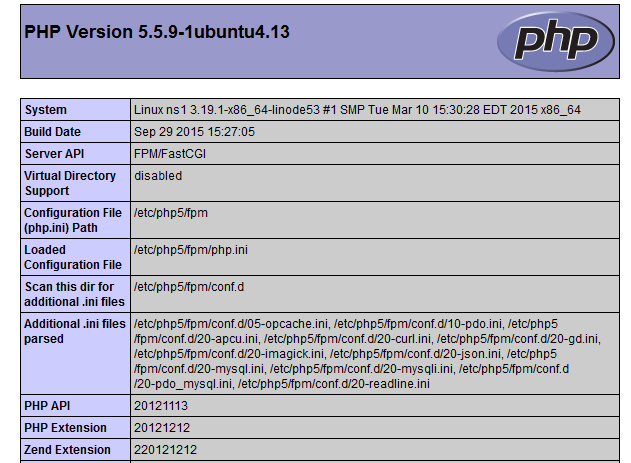Install LAMP Easily A Beginner’s Guide from OperaVPS
To Install LAMP means setting up Linux Apache MySQL and PHP to run web applications on a server. To install LAMP use your Linux package manager to add each component. This creates a basic web hosting environment.
🤖AI Overview:
Install LAMP refers to the process of setting up a software stack that includes Linux, Apache, MySQL, and PHP on a server. The main intent is to create a reliable environment for hosting and running dynamic websites or web applications. Installing LAMP enables users to manage web content, databases, and server operations efficiently. This solution is widely used because it offers flexibility and strong support for web development.
Quick Steps
- Add the EPEL repository to your CentOS system.
- Install Apache MariaDB and PHP using the “yum” command.
- Install essential PHP modules for better functionality.
- Start and enable Apache and MariaDB services.
- Secure your MariaDB installation with “mysql_secure_installation”.
- Allow HTTP and HTTPS ports through the firewall and reload settings.
- Set your server hostname as needed using hostnamectl.
- Test your setup by creating and opening a phpinfo.php file in the browser.
What Is Apache?
Apache is a free open-source HTTP web server that can be installed and run on all Linux distributions as well as Windows operating systems. The Apache web server is capable of servicing programmable pages (.htm .php .pl .cgi .js) and much more. According to statistics released in March 2021, about 33.4% of websites are serviced by Apache.
What Is MariaDB?
MariaDB is one of the most popular database interfaces in the world that can run on any type of server, allowing multiple users to access multiple databases. MariaDB is the new name for MySQL for CentOS 7 servers.
What Is PHP?
A free open-source server-centric programming language is one of the best options for expanding web pages. This interpreter is capable of producing dynamic websites.
Step By Step Guide To Install LAMP
- Installing the EPEL Repository.
rpm -ivh http://dl.fedoraproject.org/pub/epel/7/x86_64/e/epel-release-7-5.noarch.rpm - Install MariaDB, Apache, and PHP (latest version).
yum -y install mariadb-server mariadb httpd php - Install PHP Modules.
yum -y install php-gd php-ldap php-odbc php-pear php-xml php-xmlrpc php-mbstring php-snmp php-soap curl curl-devel mod_ssl mod_security php-ioncube-loader php-mcrypt php-suhosin php-xml php-magickwand libexif php-imap openssl zip zlib - Enable Apache and MariaDB services on Run-Levels.
- Start and enable Apache Commands
systemctl start httpd.service systemctl enable httpd.service - Start and enable MariaDB Commands
systemctl start mariadb.service systemctl enable mariadb.service
- Start and enable Apache Commands
- MariaDB Setting
Apply MariaDB settings using the following command.mysql_secure_installationFirewall Setting We release/allow the ports 80 and 443 which are related to HTTP and HTTPS, and reload the firewall settings using the below commands.
-
firewall-cmd --permanent --zone=public --add-service=http firewall-cmd --permanent --zone=public --add-service=https firewall-cmd --reload - Hostname Setting
set a server/hostname as needed.hostnamectl set-hostname myserver.operavps.comNote: Instead of myserver.operavps.com, you should put your own server/hostname
- Installation control of Apache, MySQL, and PHP.
Create a file called phpinfo.php, put it below codes in, and save it to /var/www/html/phpinfo.php<php phpinfo (); ?>
Now open http: //SERVER_IP/phpinfo.php with your browser. Your output will look like the following page.
Note: Instead of SERVER_IP, you should put your own server IP.
You may buy Linux VPS to start your magic configurations and run the website(s) on your own webserver!
Conclusion
Now you have a complete step by step plan to Install LAMP on your server. Following these clear instructions will help you build a solid foundation for your website or application. If you have any questions, feel free to reach out to the OperaVPS support team. We are here to help you every step of the way.
FAQ
2. Is it difficult to install LAMP for beginners?
Not at all. Installing LAMP can be straightforward if you follow step-by-step instructions. Most guides, including the one here at OperaVPS, are tailored to help beginners install LAMP successfully.
3. What are the system requirements to install LAMP?
You will need a server or virtual private server with a Linux-based operating system, such as Ubuntu or CentOS, at least 1 GB of RAM, and root or sudo access to complete the installation.
4. Can I install LAMP on Ubuntu and CentOS?
Yes, you can install LAMP on popular Linux distributions like Ubuntu and CentOS. The commands may differ slightly, but both operating systems support a LAMP stack installation.
5. How do I check if LAMP is installed and working correctly?
After installing LAMP, you can verify each component by running simple tests, such as visiting your server’s IP address in a browser for Apache and using PHP and MySQL test scripts to confirm everything is running as expected.
6. Is it safe to install LAMP on my server?
Yes, installing LAMP is safe if you download software from official repositories and follow security best practices. Always keep your stack updated to protect your server from vulnerabilities.
7. Do I need to install all components of LAMP at once?
You can install each LAMP component separately, but for most beginners, a complete installation at once is recommended for easier configuration and fewer compatibility issues.
8. What is the role of each component in the LAMP stack?
Linux provides the operating system platform. Apache is the web server that serves your website files. MySQL manages your database. PHP processes and displays dynamic content.
9. What should I do if I encounter errors during installation?
Review the installation steps carefully, check for any mistyped commands, and consult online documentation. If you are an OperaVPS customer, you can contact our support team for further assistance.
10. Can I host multiple websites after I install LAMP?
Yes, LAMP allows you to host multiple websites by configuring virtual hosts in Apache and using separate databases in MySQL for each project. Detailed instructions are available in our beginner guides.
